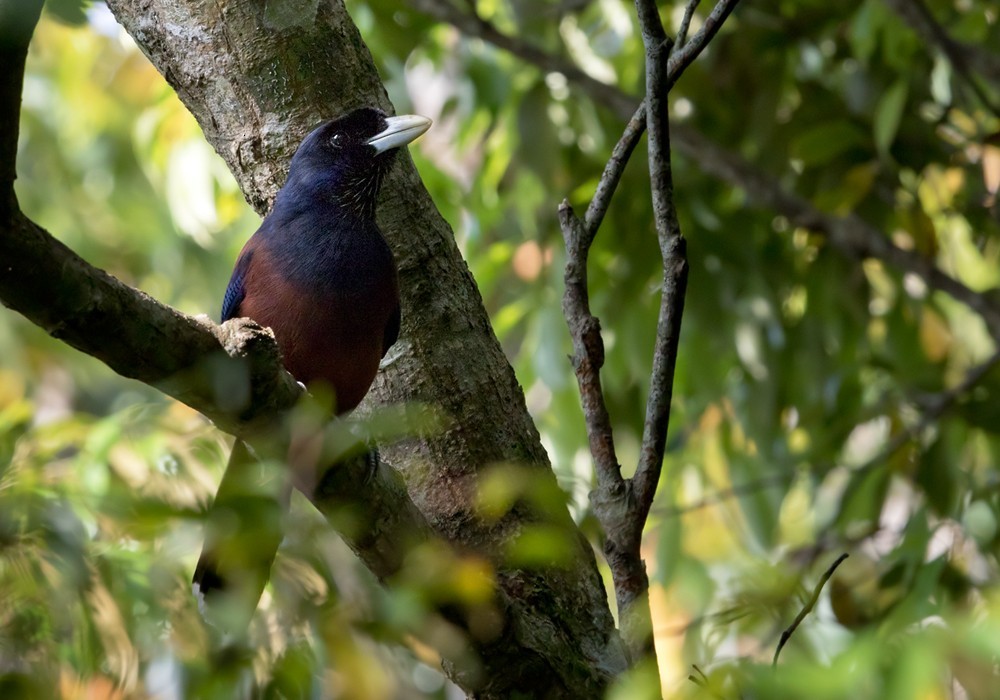Lidth's Jay
A species of Old World Jays Scientific name : Garrulus lidthi Genus : Old World Jays
Lidth's Jay, A species of Old World Jays
Botanical name: Garrulus lidthi
Genus: Old World Jays
Content
Description General Info
 Photo By Lars Petersson
Photo By Lars Petersson Description
Lidth's jay (Garrulus lidthi) or the Amami jay, is a passerine bird in the family Corvidae, native to Japan. Measuring up to 38 cm (15 in) in total length, it is slightly larger than its close relative the Eurasian jay, with a proportionately stouter bill and also a longer tail. It has no discernible crest, with the head feathers a velvety black, the shoulders and back a deep purplish blue and all other parts a rich chestnut purple. This jay has a very restricted distribution occurring only on the southern Japanese islands of Amami Ōshima and Tokunoshima in pine forest, sub-tropical woodland and cultivated areas especially around villages. Food is largely made up of the acorns of the native oak Quercus cuspidata but includes small reptiles and invertebrates of many types. The bird nests in large cavities in trees but otherwise the nest is the same as that of the other two Garrulus species with 3–4 eggs. The voice is similar to that of the Eurasian jay. The species was threatened in the past by hunting for its feathers, which were used for decorating ladies' hats. Today it is threatened by introduced small Indian mongooses, which were brought to its range to control the venomous Okinawa pit viper. The species is fully protected under Japanese law and is increasing in numbers thanks to control of the mongooses. The species name commemorates the Dutch zoologist Theodoor Gerard van Lidth de Jeude. In 1965 it was chosen as the symbolic bird of Kagoshima Prefecture 
Size
38 cm
Nest Placement
Tree
Feeding Habits
Lidth's Jay is omnivorous, primarily consuming invertebrates, seeds, and berries, and seasonally small reptiles and chestnuts. Typically found in pairs or groups, lidth's Jay forages on forest floors and in clearings, using its large bill to probe and climb, sometimes congregating in large numbers in winter.
Habitat
Lidth's Jay predominantly inhabits mature forests, encompassing both subtropical evergreen broadleaf and coniferous forests. They are also frequent in man-made landscapes such as plantations and small woodlots near village peripheries. Their distribution includes a broad range of lowland areas and upland regions.
Dite type
Omnivorous
General Info
Feeding Habits
Bird food type

 Photo By Lars Petersson
Photo By Lars Petersson Scientific Classification
Phylum
Chordates Class
Birds Order
Perching birds Family
Crows and jays Genus
Old World Jays Species
Lidth's Jay